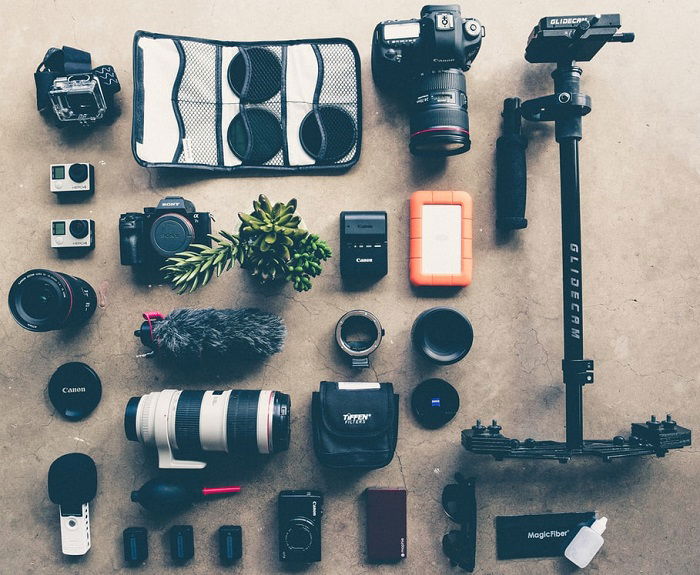If you're stepping into the world of photography, you've probably heard about Getty Images. It’s one of the largest and most respected platforms for licensing high-quality visual content. Established in 1995, Getty Images is not just a marketplace—it's a treasure trove of stunning photos, illustrations, videos, and music that people and businesses around the world regularly turn to for their creative needs. Artists, advertisers, and content creators rely heavily on Getty for unique imagery that resonates with their audiences.
You might be wondering why artists choose Getty Images over other platforms. Here are a few reasons:
- Global Reach: Your work can be seen and purchased worldwide.
- Quality Control: Getty Images is known for its high standards, ensuring your work is showcased alongside that of top photographers.
- Consistent Revenue: Selling images through Getty offers a potential for steady income through royalties.
Considering the prestige and benefits, becoming a contributor may just be the next big step in your photography journey. In this guide, we’ll explore everything you need to know about joining the ranks of Getty’s esteemed contributors.
Understanding the Role of a Contributor

So, what does it mean to be a contributor to Getty Images? Well, it's about much more than just uploading your photos and waiting for sales to come in. Here’s a breakdown:
- Content Creation: As a contributor, your main job is to continuously capture and submit high-quality images that meet Getty’s standards.
- Understanding Trends: You need to keep an eye on market trends and demand to create content that resonates with buyers.
- Technical Skills: Having a solid foundation in photography techniques, editing, and composition is essential.
- Meeting Deadlines: Timeliness in submissions can enhance your visibility on the platform, so it’s important to manage your time effectively.
Becoming a Getty Images contributor involves more than just snapping pictures; it’s also about professionalism. Here’s what that means:
| Quality | Consistency | Creativity |
|---|---|---|
| Deliver images that meet high standards for resolution and composition. | Regularly submit new content to build a diversified portfolio. | Think outside the box and provide unique perspectives to attract buyers. |
By understanding and embracing this role, you're not just a photographer; you’re a valuable contributor to a global visual narrative. It's an exciting journey that offers plenty of opportunities for growth and success!
Also Read This: How to Crop an Image for Perfect Fit
3. Requirements for Becoming a Contributor

If you're looking to become a contributor to Getty Images, there are several requirements you need to meet. Let’s break them down so you can ensure you're on the right path to success!
- Photography Skills: First and foremost, you need a good grasp of photography. This means understanding composition, lighting, and post-processing techniques. It's not just about having a fancy camera; it’s about knowing how to use it!
- Portfolio Preparation: Before applying, build a polished portfolio. This should be a curated selection of your best work that showcases your unique style and the types of images you want to sell.
- Technical Standards: Getty Images has specific technical standards for submissions. A minimum resolution of 10 MP is often required, and images should be well-exposed, focused, and free from technical flaws.
- Model and Property Releases: If your images include people or private property, make sure you have proper releases. This ensures you can legally sell these photos while avoiding copyright issues.
- Knowledge of Licensing: Understanding the difference between rights-managed and royalty-free licensing is crucial. It demonstrates professionalism and helps you sell your work more effectively.
In summary, meeting these requirements is not just about checking boxes; it’s about proving to Getty Images that you're serious and ready to deliver top-notch content!
Also Read This: How to Land a Job at Getty Images for Exciting Career Opportunities
4. Building Your Portfolio
Your portfolio is your calling card in the world of stock photography. Think of it as your artistic resume, and it should represent your best work while telling a compelling story about your style as a photographer. Here’s how to build an impressive portfolio!
- Curate Quality Over Quantity: It’s better to have a smaller selection of high-quality images than a large number of mediocre ones. Aim for around 20-30 of your best pieces.
- Diversity of Subjects: Include a variety of subjects in your portfolio. Showcase your ability to shoot landscapes, portraits, lifestyle shots, and any niche areas you’re passionate about.
- Consistent Style: Your work should convey a cohesive style. This helps industry professionals recognize your signature look and makes your portfolio standout.
Here’s a simple table to help you visualize the essentials of an effective portfolio:
| Element | Description |
|---|---|
| Quality Images | Only include images that reflect your best work. |
| Variety | Showcase different themes and subjects. |
| Consistent Editing | Maintain a similar editing style throughout. |
Remember, your portfolio isn’t just a collection of photos; it’s a reflection of your artistic identity. Take the time to create something meaningful, and you’ll be one step closer to making an impact on Getty Images!
Also Read This: how to mirror an image on macbook
Submitting Your Work
So, you’ve captured some fantastic images and you're ready to share your talent with the world, right? Well, submitting your work to Getty Images is an exciting step! Here’s the lowdown on how to get your incredible shots noticed.
First off, make sure your images are up to spec. Getty Images has specific technical requirements for submissions, including:
- File Format: JPEG or TIFF files are preferred.
- Resolution: Images should be at least 4 megapixels for standard contributors and 10 megapixels for premium contributors.
- Color Space: Stick to RGB color space for best results.
Once your images are ready, it’s time to create an account on the Getty Images Contributor Portal. Here’s how:
- Visit the Getty Images Contributor page.
- Fill out the registration form with your details.
- Submit your portfolio! You’ll typically need to provide around 10 test images.
Don’t forget to label your images thoughtfully. This is your chance to shine! Use descriptive and relevant keywords, as this helps clients find your work.
Lastly, be prepared for licensing your images. Getty offers various licensing options, so familiarize yourself with the types and choose what suits you best. Happy submitting!
Also Read This: How to Use Audacity to Record Audio from YouTube Videos
Navigating the Review Process
Ah, the review process—it's the moment of truth! After submitting your work, you'll naturally be excited, but you also need to understand what happens next at Getty Images.
Once your images are submitted, they go directly to the Getty Images review team. This could take anywhere from a few days to a few weeks. The team will evaluate your images based on several criteria:
- Technical Quality: Is the image sharp, well-exposed, and free from noise?
- Relevance: Does the image fit into current market trends or customer needs?
- Creativity: Is your concept unique and engaging?
During this period, it’s essential to remain patient. If your work is accepted, you’ll get a notification, which is super exciting! But if it’s not, don’t be discouraged. You’ll typically receive feedback, which can be invaluable for improving your craft. Use this as a learning opportunity.
To keep track of your submissions and their statuses, visit your Contributor Dashboard regularly. It’s a handy tool that gives you a clear overview of what is under review, accepted, or rejected.
Remember, even the best photographers faced rejections at some point, so it’s all part of the journey. Stay persistent, continue to hone your skills, and you'll find success as a Getty Images contributor!
Also Read This: Simple Shutterstock Download Image Method
7. Maximizing Your Earnings as a Contributor
So, you’ve become a Getty Images contributor—wonderful! But how do you ensure your earnings reflect your hard work and talent? Here are some strategies to help you maximize those earnings:
- Quality over Quantity: While it may be tempting to upload as many images as possible, focusing on quality can yield better results. High-quality, captivating images are more likely to be licensed.
- Know Your Market: Keep an eye on the current trends and what type of imagery is in demand. You can use Getty's own search function to see what types of images are ranking well.
- Diversify Your Portfolio: Don’t pigeonhole yourself into one genre of photography. Consider a mix! Adding different styles—like lifestyle, nature, or business—can reach a broader audience.
- Optimize Your Metadata: Properly tagging your images with relevant keywords can make your work more discoverable. Use clear, descriptive titles, and don’t shy away from adding similar alternatives.
- Stay Active: Regularly contribute new content. The more you have in your portfolio, the higher the chances someone will find and license your work.
By applying these strategies, you can not only boost your visibility but also enhance your financial returns as a Getty Images contributor.
Also Read This: How to Change the Perspective of an Image in PowerPoint
8. Tips for Success on Getty Images
So, you want to thrive as a contributor on Getty Images? Great choice! Here are some proven tips to help you achieve success:
- Build a Strong Portfolio: A diverse and cohesive portfolio is essential. It’s your first impression! Aim for a mix of styles and subjects that reflect your unique vision.
- Keep Up with Trends: Staying informed about current trends in photography can give you insights into what buyers are looking for. Follow popular hashtags and trends within the industry.
- Be Persistent: Rejections are a normal part of the process. Don’t get disheartened! Learn from feedback and keep submitting. Growth comes from experience.
- Engage with the Community: Interacting with other contributors and buyers can provide valuable insights and foster collaborations. Join online forums or social media groups focused on photography.
- Use Social Media Wisely: Promote your Getty Images portfolio on your personal social media platforms. It’s a fantastic way to reach potential buyers and showcase your work.
Incorporating these tips into your strategy doesn’t just boost your presence on Getty Images; it builds a strong foundation for a successful photography career.
How to Become a Contributor to Getty Images - A Comprehensive Guide for New Photographers
For aspiring photographers, becoming a contributor to Getty Images can be a dream come true. Known for its vast collection of high-quality images and videos, Getty Images provides an excellent platform for photographers to showcase their work and earn income. Here’s a comprehensive guide to help you navigate the process of becoming a contributor.
Steps to Become a Contributor:
- Understand the Requirements: Before applying, familiarize yourself with the type of content Getty Images accepts. They look for:
- High-resolution images (minimum 300 dpi)
- Original content, preferably with a creative angle
- Legally released images (model and property releases where necessary)
Tips for Success:
| Tip | Description |
|---|---|
| Stay Current | Follow trends in photography and current events to capture relevant content. |
| Networking | Engage with other photographers for collaborations and inspiration. |
| Promotion | Promote your Getty Image portfolio on social media to gain visibility. |
Becoming a contributor to Getty Images requires dedication, creativity, and an understanding of the marketplace. By following these steps, new photographers can successfully launch their careers and gain exposure through one of the leading image platforms in the world.
Conclusion: Joining Getty Images as a contributor can significantly boost your visibility and income as a photographer, provided you adhere to quality standards and continuously innovate your craft.
 admin
admin








